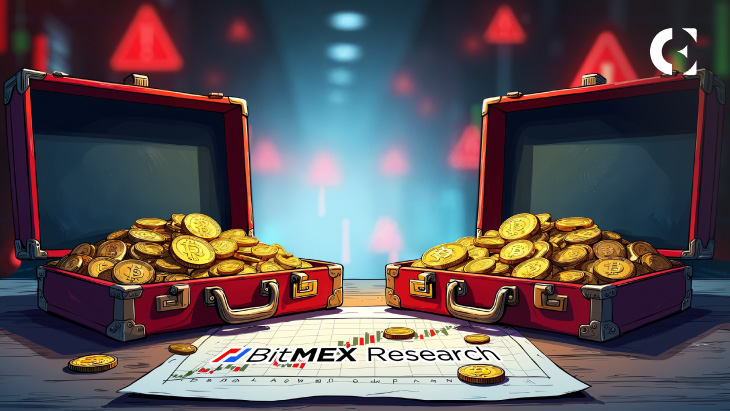- NASDAQ-listed crypto treasury firms are trading at steep premiums to their underlying crypto
- They are offering big short-term gains for PIPE investors.
- High advisory fees could erode value for years, with many firms eventually becoming “zombies” trading below mNAV.
The 2025 crypto market is witnessing a new speculative wave, with NASDAQ-listed crypto treasury companies emerging as this cycle’s equivalent of the 2017 ICO craze and the 2021 NFT boom.
According to a detailed August 12 report by BitMEX Research, the model offers lucrative short-term gains for early insiders but could drain long-term investors through high fees and collapsing premiums to net asset value (mNAV).
How the “Treasury Company” Model Works
These companies often launch through a reverse takeover of a small, debt-free NASDAQ “zombie” firm or via a SPAC. Early backers, known as PIPE investors, buy in at or near the value of the cryptocurrency to be purchased. Once listed, the stock often trades at a premium, sometimes 2x to 5x its underlying mNAV.
That premium allows the company to issue even more shares at a high price, use the cash to buy more crypto, and push both the coin and the share price higher in a feedback loop.
BitMEX Research calls this a “heads you win, tails you don’t lose” scenario for the insiders.
Sound familiar? This isn’t just a theory; it’s already happening. Here’s our past report on a stock that surged 554% after announcing a Bitcoin treasury.
Passive Fund Endgame
If the strategy succeeds, crypto treasury stocks can gain inclusion in major indexes, triggering buying from passive funds like Vanguard or State Street. BitMEX notes that Vanguard already owns 7% of MicroStrategy’s shares across 66 funds, despite its historically anti-Bitcoin stance.
Such passive ownership can create “forced buying” when the company issues more shares to acquire additional cryptocurrency. The report speculates that if passive ownership exceeds 50% and the stock trades at a premium, it could amplify the so-called “infinite money glitch” before the premium inevitably fades.
Strategic Advisors: High Costs, High Stakes
Behind these companies are “strategic advisors,” key figures who select management, direct treasury strategy, and market the stock. Their compensation often includes hefty setup fees of 1%–8% of the deal size. It also includes ongoing incentives tied to market cap or mNAV premiums.
While these fees align incentives during boom periods, BitMEX warns they can rival or exceed ETF costs over time. The report draws parallels to the Grayscale Bitcoin Trust (GBTC), which long maintained a 2.5% annual fee before competitive pressure from spot ETFs pushed fees down to 0.25%. This triggered mass redemptions, with Grayscale recording a staggering $23.72 billion in outflows since January 2024.
The GBTC parallel. This high-fee model has a famous precedent. Here’s our earlier report on the issues Grayscale’s GBTC has faced.
“Just to Buy the ETFs”
BitMEX predicts that many of today’s crypto treasury companies will eventually trade at a discount to mNAV, becoming “zombies” still paying sizable fees. A select few may achieve enough scale to attract dominant passive fund ownership before premiums collapse.
“Another more simple takeaway from this report is just to buy the ETFs,” BitMEX said, advising investors.
Disclaimer: The information presented in this article is for informational and educational purposes only. The article does not constitute financial advice or advice of any kind. Coin Edition is not responsible for any losses incurred as a result of the utilization of content, products, or services mentioned. Readers are advised to exercise caution before taking any action related to the company.







